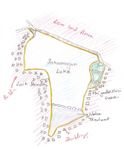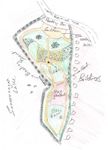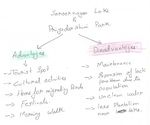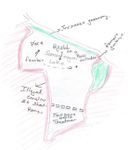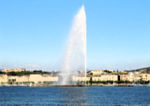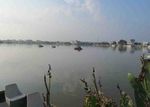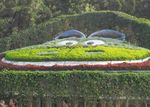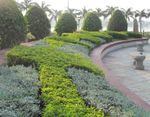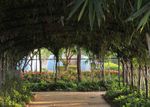Planting Design 2013 Working Group 1 - Case Study C
---> back to group page working group 1
Saroornagar Lake
| Name | Saroornagar Lake | |
| Location | Hyderabad | |
| Country | India | |
| Authors | Vedavyas Vundyala | |
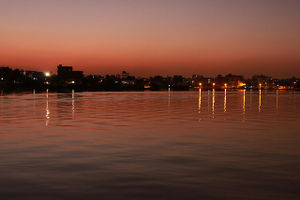
| ||
|
| ||
Rationale: Why is this case interesting?
Saroornagar Lake is 387 years old lake which was created for agricultural and drinking purpose. The lake was clean until 1956, Year when Hyderabad city was announced as capital for Andhra Pradesh state population kept on increasing and the city got expanded. Till 1956 it was a lake where migratory birds and other aquatic species were living there. Years passed and the lake got polluted and species also disappeared.
In 2003-04 HMDA-Hyderabad Urban Development Authority started restoring the lake with 200 Million Inr (US$3.1 Million). After the Restoration of the lake, Migratory birds returned to lake in small numbers every year the count increased.
Author's perspective
I have done my bachelor in Civil Engineering. I have chosen Saroornagar Lake so that I can make myself comfortable to landscape architecture from Civil engineering. the water treatement and the foundation for the change of landscape architecture and the draw backs because of construction I can understand. As I was living in that area past 20 years I know a lot about that lake and the changes occurred in the lake. I can also identify the architecture work in the lake. About the park i have studied a lot and the way plants behave when the season is changed. The year wise changes occurred and the damage caused to the lake and park and the reason for the development. I have observed each and every thing.
Landscape and/or urban context of your case
In 1626, the lake was created for agricultural and drinking purposes. Spread over 99 acres (40 ha), the lake has a maximum depth of 6.1 metres (20 ft). It is one of five major water bodies in Hyderabad. After 1956 when Hyderabad became the state capital of the Andhra Pradesh, the city witnessed unprecedented population growth, industrialisation and agriculture using synthetic fertilizers and insecticides. Inevitably, untreated domestic sewage, solid waste and industrial effluents entered into the catchment area of this lake.
In 2003, the Minister of Tourism for Andhra Pradesh announced that the lake and its surroundings would be developed at a cost of 200 million(US$3.1 million). As a part of this initiative, two sewage treatment plants with the capacity to treat 250 million litres of sewage a day were to be installed. In addition to this, tourism-centric facilities such as a boating facility in the lake, a children's park and a restaurant were to be taken up. The minister also announced that all construction activity on the lake bed were to be stopped. Soon after, city's civic agency Hyderabad Urban Development Authority took up the task of cleaning up the lake.
Four years after the installation of the sewage treatment plant, the officials reported 95% of sewage being treated. With the groundwater conditions improved, migratory birds returned to the lake in big numbers. In 2007, 5 acres (2.0 ha) park was developed alongside the lake at a cost of 15 million (US$230,000). The park featured sculptures, ornamental landscape, boating facility and an environment education centre. Citizens of nearby localities such as L. B. Nagar and Vanasthalipuram welcomed this development.
After the restoration, the civic agencies have taken necessary steps that the lake does not get polluted because of the annual immersion of Ganesh idols. In addition, steps were taken to curb unauthorised construction near the lake bed. However by 2009, the filtration unit of the sewage treatment plant stopped functioning properly. As a result of this, the lake was getting polluted with domestic waste.
- Biogeography, cultural features, overall character, history and dynamics
- Illustration: Map; sketches; short descriptive analyses
Analytical drawings
Please add four analytical sketches/drawings (or montages/schemes) of your case and take the following aspects into account:
- natural dynamic versus cultural framework - in how far do these two forces come together in your case?
- dynamic through the year (you may imagine how the site looks in spring and summer, maybe you also remember it)
- highlight potentials and problems
- Analytical Drawings
Projective drawings
- Please add four projective sketches/drawings (or montages/schemes) for your case and take the following aspects into account:
- How would you like this case to change in the near future? (in 1-2 years)
- And how could it look like in 10-15 years?
- Projective Drawings
- Yourfilename3.jpg
projective drawing 3
- Yourfilename4.jpg
projective drawing 4
Summary and conclusion
I conclude that
- If a park is constructed or designed. I should consider or keep in mind the population and the designe should be created.
- It should be maintained well
- There should be no space left empty.
- By keeping it non polluting, we can keep the environment also safe.
Image Gallery
You may add a series of images/photos in addition to the sketches/drawings
- Image Gallery
References
* "HUDA gifts parks to L.B. Nagar". The Hindu. 12 July 2007. Retrieved 9 November 2010.
* "Saroornagar Lake to be developed with Rs. 20 cr.". The Hindu. 30 August 2003. Retrieved 10 November 2010.
* http://en.wikipedia.org/wiki/Saroornagar_Lake
* Own Enquiry and own pictures
About categories: You can add more categories with this tag: "", add your categories
